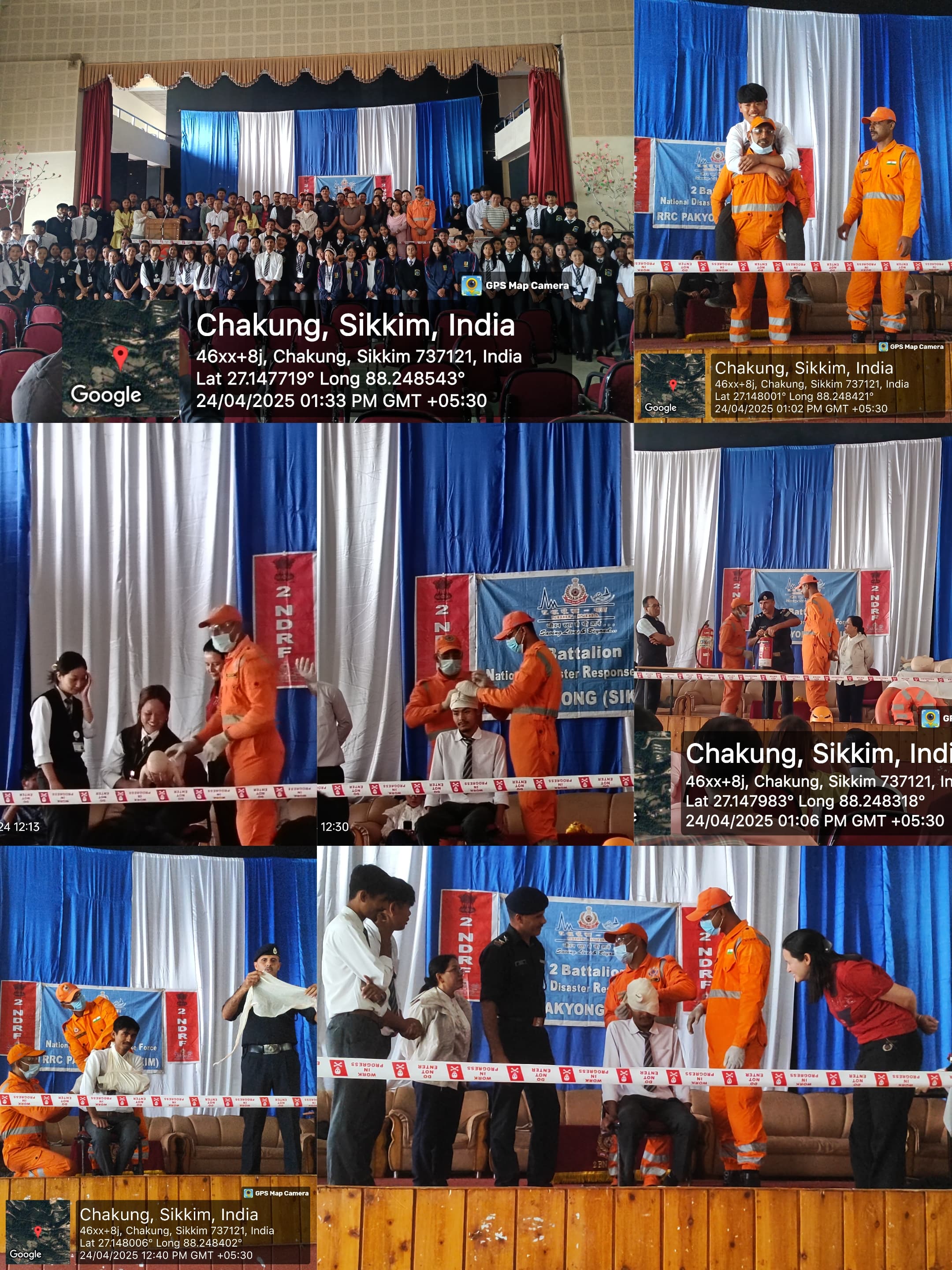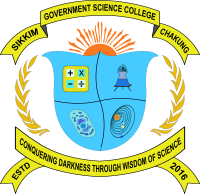Familiarization Exercise Strengthens Disaster Preparedness at SGSC Chakung
On April 24, 2025, a familiarization exercise on disaster management response and emergency preparedness was jointly organized by the National Disaster Response Force (NDRF), India and the District Disaster Management Authority (DDMA), Soreng, in the auditorium hall of Sikkim Government Science College, Chakung. The program aimed to build awareness and practical skills among faculty, staff, and students, emphasizing Sikkim’s vulnerability as a Zone IV seismic region. Led by Sub-Inspector Bajrang Lal of NDRF Pakyong, the session covered life-saving techniques—including adult and infant CPR, management of airway obstructions, hemorrhage control, shock management, fracture stabilization, improvised stretcher fabrication, fire extinguisher usage, earthquake safety (“Duck, Cover, and Hold”), and pre-hospital snakebite treatment.
Inaugural Addresses Highlight Seismic Vulnerability
The exercise opened with a welcome address from Dr. Sudhan Pradhan, Principal of SGSC Chakung, who underscored the college’s commitment to safety and community resilience. He was followed by the District Disaster Management Project Officer, Soreng District who reminded attendees that Sikkim lies in Seismic Zone IV—making earthquake preparedness a vital skill for every citizen. She outlined the goals of the exercise: to build confidence in basic emergency response, reduce panic during disasters, and save lives through timely intervention. Their remarks set the tone for an afternoon of hands-on training designed to bridge the gap between theory and real-world response.
NDRF Demonstrates Life-Saving Techniques
Sub-Inspector Mr. Bajrang Lal and his NDRF team led participants through practical demonstrations:
- CPR & Airway Management: Attendees practiced the 30:2 compression-to-ventilation ratio for adults and the two-finger technique for infants, as well as manoeuvres to dislodge foreign bodies from airways.
- Haemorrhage Control & Shock Management: Techniques included applying direct pressure, using tourniquets, elevating limbs, and keeping patients warm to counteract shock.
- Fracture Stabilization & Improvised Stretchers: Participants learned to fashion splints from everyday materials and to construct makeshift stretchers from bamboo poles and cloth—vital skills when specialized gear is unavailable.
Fire Safety & Extinguisher Use: The NDRF team demonstrated the PASS method (Pull, Aim, Squeeze, Sweep) and explained how to select the correct class of extinguisher for different fire types. - Emphasis on Earthquake and Snake-Bite Response: Given the region’s seismic activity, special focus was placed on the “Duck, Cover, and Hold” protocol, practicing drills under tables and identifying safe evacuation routes. The final session addressed snake-bite first aid: immobilizing the bitten limb, avoiding harmful traditional methods like cutting or suction, and ensuring rapid transport to medical facilities.
Conclusion
The full-day exercise not only equipped participants with hands-on skills essential for immediate response but also fostered a deeper understanding of coordinated action during crises. Feedback highlighted increased confidence among faculty and students in administering first aid, managing hazards, and supporting one another under pressure. By translating theoretical knowledge into practiced techniques, SGSC Chakung has taken a significant step toward a safer campus community—demonstrating that preparedness is both achievable and indispensable in a seismically active region.


